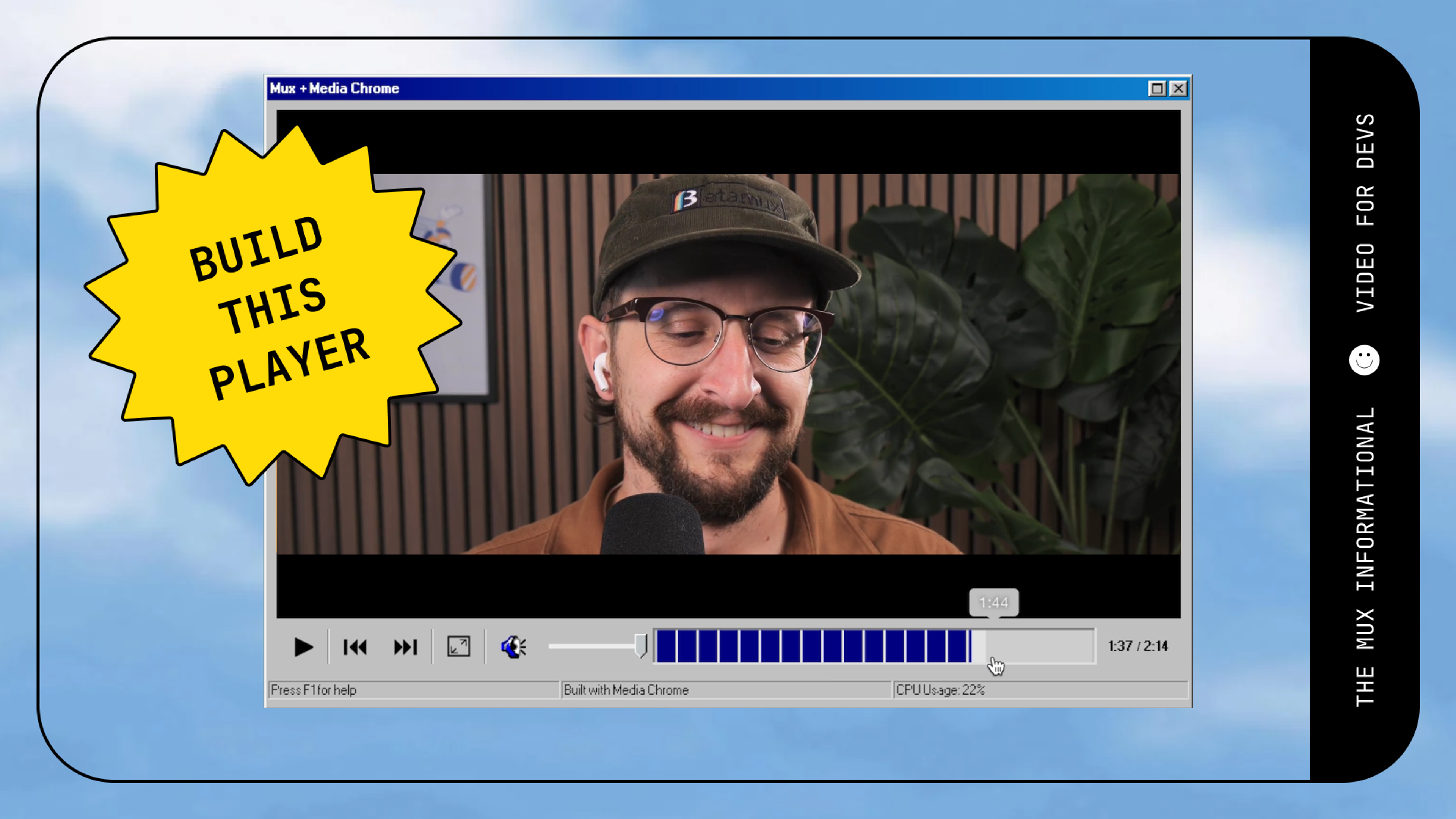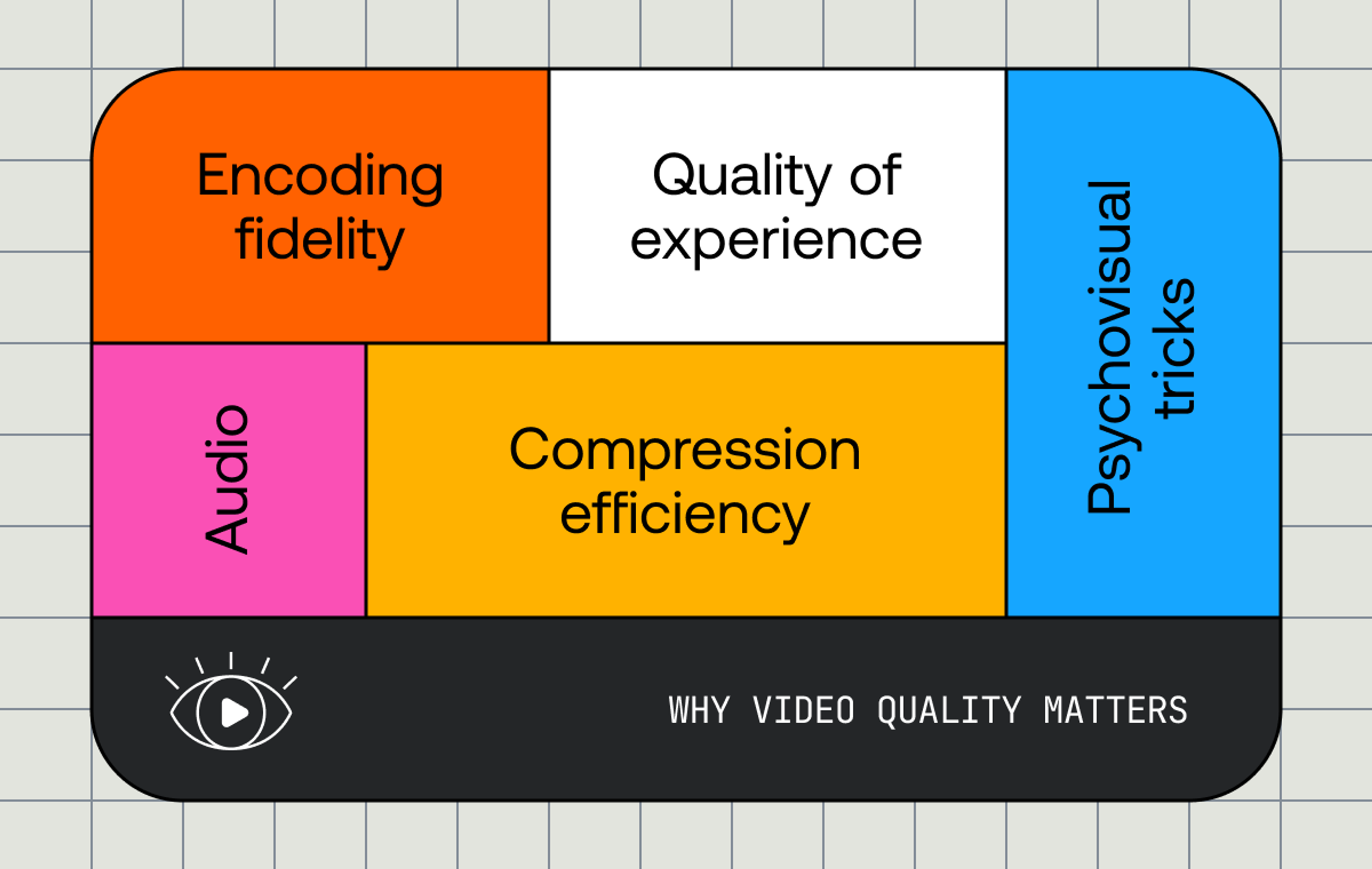In this time of crisis, many businesses are looking to stream online video as a way to reach their audiences who are now stuck at home. Whether shelter-in-place forced your business to pivot and this is the first time you’ve had to consider charging customers for video content or you were already well on your way to building a streaming business; either way, the demand for streaming video has exploded and it’s more important than ever to consider a monetization strategy.
After hundreds of conversations fielding questions around how to best monetize video, I thought it would be helpful to write a post that covers some of the top monetization strategies that people have used to build profitable, thriving businesses around video. But first, let’s dig into some common misconceptions around cost.
Common Misconceptions: The Cost to Serve Video Online
Over the past few years, Mux’s product and engineering teams have worked tirelessly to abstract away the most challenging elements of serving video. Why? Video was too hard in 2017 & video is still too hard in 2020. Everything we do at Mux is focused on enabling developers to build stunning video experiences into their applications without having to be video experts themselves. We do this by taking on the challenging elements of video streaming like advanced encoding and CDN switching built by our own expert team.
Ok, so we’ve established that serving video online is hard technically but what about the business side? How do you justify the cost of Mux or another vendor in a way that makes sense for your business and your customers? By understanding some of the common misconceptions people have around the cost of streaming online video, you can understand how to appropriately price and package your video!
Isn’t serving video online cheap?
Um…no, it’s not. Large consumer brands like Netflix and YouTube, plus video-centric social apps like TikTok, Snapchat, and Instagram, have spoiled the general consumer. Viewers get beautiful video experiences in the palm of their hands anywhere in the world, with little to no cost. What?...that’s crazy. Imagine telling that to someone watching The Matrix on DVD in 1999? 🤯The fact is, these companies pour billions of dollars into creating online video experiences.
Why pay when you can just upload video to YouTube?
It may seem obvious if you are building a business that is centered around video, but for someone new to video the benefits of “owning” your video may not be totally obvious.
- YouTube and other platforms aren’t actually free. They cut into the profits of original content creators. YouTube for instance takes roughly 45% of ad revenue. That’s almost half of your revenue! So, monetizing content through your own platform can help win back some of that lost profit and prove incredibly lucrative. We see influencers and creators moving in this direction more and more.
- How about embedding video in a site that just links to YouTube? For many brand-conscious companies, this cheapens the experience significantly. Plus, if you want video streamed to a smart tv or mobile app, forget about it! You are going to need to own your video workflow.
Zoom is free for 40 minutes, can’t we use that?
This one is fascinating to me. The answer is “It depends,” but most likely, no. Overnight, “zoom,” “zooming,” & “zoomies,” became global household terms. I don’t know if anyone actually uses that last term, but it reminds me of a kitten trying to run on a hardwood floor, so it stays.

I have always loved the Zoom technology. Over many years of selling software, I have used every conference call and video chat tool under the sun. You name it, I’ve sent you a calendar invite with a link to it. Zoom is the best so far, period. However, there is an important distinction to be made between the one-to-one & one-to-many use cases for streaming video. In the wild, this usually looks like conferencing vs. live streaming. There are cost considerations and performance tradeoffs with both. Here’s the breakdown:
- WebRTC - The Real-Time Communications Protocol is an open technology that companies leverage for near “real-time” latency. This is great for group video chats, conference calls and of course, “Zoomies.” WebRTC gives incredibly fast two-way or few-to-few communication, but can get frighteningly expensive and technically infeasible to scale to a large audience.
- Live Streaming (RTMP ingest, HLS delivery) - This is how Mux is designed. We are a good fit for the one-to-many streaming scenario. One stream (or multiple, think Twitch), being pushed out to hundreds, thousands, or millions of viewers. Broadcast software like OBS, Wirecast & Streamaxia will push an RTMP feed, as will a lot of cameras, and even Zoom (our engineers can explain that better than me). Mux will ingest the stream, encode it, and push it out to viewers as HLS. This is a gross oversimplification, but it’s the basic workflow. What you get is:
- The ability to scale to any audience size
- Costs that make sense at scale
In fact, the more video you add, the lower the per-unit cost for each minute of video ingested, stored & streamed. Aka "Economies of scale,” for all you microeconomics fans out there or anyone that is just here for the buzzwords.🐝 This technology workflow is designed to be economical even at a very large scale, but what is the trade-off? It’s latency. Ingest through to HLS will always have a little delay from the glass of the camera lens to the glass of your phone, tablet or TV. We call this “glass to glass latency” and today, Mux hovers around 8-14 seconds for live streaming.
These common misconceptions around cost begin to highlight why owning your own video workflow is important. With a modern video API like Mux, you can scale affordably and own the entire experience for your customers both now and in the future. This means you are in control from product design, to quality assurance, to monetization strategy, and everything in between. However, in order to own it and reap the benefits that come along with that, one must pay for it. So let’s get to the point!
How to monetize your video content
1. Freemium
Simply a combination of the words “Free” & “Premium” this has become a common monetization strategy over the years. Specifically, this model has seen incredible success within internet startups and smartphone applications alike. There is a low barrier to entry where users get basic functionality & access at no cost. For full access they can opt to pay a fee, which generally takes shape as a monthly subscription. Free content is supported by ads while premium content/features are supported by member subscriptions. Voila!📈Just like that, you have a profitable, sustainable business. Stockholm-based music streaming service, Spotify, made a huge splash 🌊 when they launched with this business model in 2008. In a relatively short period of time, the app changed the way human beings would access and pay for music, forever. It works much the same with video: ad supported vs. ad-free, trailers vs. full episodes, the list goes on.
2. Base plus overage
I don’t really know what to call this one, so we’ll call it base + overage. Since I’m a salesperson, I will use a car analogy here 🚗 then, I’ll cold call you to talk about the weather…☔. Kidding, we don’t do that. In the non-internet world, this model is commonly used in car leases and rentals. You pay a flat fee, which includes a specific designated mileage allotment within a given timeframe. If you exceed said mileage, there is an overage rate for each additional mile. This allows the company to measure and control costs but provides the customer with the flexibility and freedom to keep using the service as they wish. If structured correctly, with reasonable overage rates, this feels fair on both sides. I personally like the model since it feels non-restrictive and puts ownership on the customer. This is particularly relevant for live streaming. Crowdcast does this very well–take a look at their pricing page.
3. Ad Supported
In its basic iteration, this is probably the most tried and true strategy.📺 There are obvious trade-offs here that I won’t get into. Companies acquire content through creators, licensing, etc… and publish it on their platform for free. If the content is popular and draws an audience, advertisers will pay top dollar to get in front, in the middle, on top of, or at the end of it. This is the primary way YouTube makes money.
4. Revshare
An example of a “Revshare” or revenue sharing business model in video, is when a hosting platform invites content creators 🎥to create shows, episodes, and other original content in exchange for a share of the advertising revenue generated. This gives creators the opportunity to earn ongoing, passive income while giving businesses the assurance they will never pay more for content than they can generate in ad revenue. Another strategy is when viewers pay for content via subscription or another model. The platform and content creators still split revenue but the payment comes from the consumer vs ads. If done properly, it can feel like a 🏆win-win. A platform with a Revshare strategy is able to position themselves to content creators as “we make money only when you make money.”
5. Transactional Video on Demand (TVOD)
AKA, good old pay-per-view. Made famous by selling tickets to high profile boxing matches on cable television 🥊, this allows your viewers the ability to purchase a ticket 🎟️in order to watch a piece of premium content. It works for both live and VOD and poses many of the same benefits and challenges as physical ticket sales.
6. Cost Plus
In its simplest form, this model involves adding a markup to the cost of goods and services purchased from a vendor. When sold to the customer, the margin is maintained even as viewership scales. This creates a flexible, scalable approach to monetizing video. To the viewer, this would feel much like utility billing or the way they are used to paying for water🚰 & electricity🔌. While it might not be appropriate for every B2C business, it can be an effective way to monetize video.
No matter how you think about video monetization, it’s important to have a strategy. Every business looks different and every audience is unique so picking the method that works for you and your customers might take some testing and adaptation. With a well-executed strategy, growth will feel exciting and video will be a predictable, manageable line item in your COGS model.
If you have other ideas for video monetization or want to make one of these six strategies work for you, I’d love to chat! You can reach me directly at sales@mux.com or by submitting a contact request form at www.mux.com



